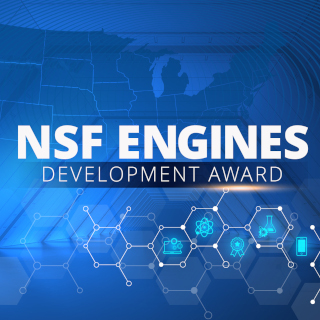Groups
Fire Group: This team and the five-state consortium house several of the leading centers for addressing the nationally important response to fire. The National Interagency Fire Center (NIFC), headquartered in Boise, ID, is home to the national fire management programs for the BIA, BLM, USFWS, NPS, USDA FS, and partners with the National Association of State Foresters, the U.S. Fire Administration, and the NWS. The Fire Center at the University of Montana develops, synthesizes, and delivers scientific products, applications, and geo-spatial technology to improve fire and fuels management. The Fire Group is led by Carl Seielstad, Fire and Fuels Program Manager, for the UM Fire Center.
Water Group: The region is home to a collection of university-operated weather stations focused on water which will be the largest of its type worldwide. These create unrivaled potential for turning water and associated data into management decisions. Soil moisture and snowpack are key drivers of drought and flooding in the Upper Missouri River Basin. Largescale flooding in the basin in 2011 and again in 2019 caused billions of dollars in damage downstream. For this reason, the US Army Corps of Engineers has a large contract with climate offices in Montana, Wyoming, South Dakota, North Dakota and Nebraska, i.e., the mesonet, that will cover about a quarter million square miles with over 500 weather stations. The lead for the Water Group will be James Swierc from the Aaniiih College Nic?-Mni (Water) Center.
Forest Management Group: The Forest Management group (UM Department of Forest Management, UI Department of Geography and Geological Sciences) aims to provide the scientific foundations and tools necessary for ecologically and socio-economically sustainable management of forest ecosystems, contributing research to develop and apply innovative management techniques in an ever-changing Rocky Mountain and North Plains region. The group’s research strategy draws from the members’ experience in partnerships with USFS and Indian Reservations in the region for collaborative forest landscape restoration7 and to identify attitudes among local communities and Native Nations towards different approaches to forest and fuels management8. This group will be tasked with (i) translating precision forestry science into forest management best practices, (ii) testing mechanisms to transfer precision forestry technology into management operations, and (iii) providing training on methods, techniques, and technologies to manage the use, conservation and restoration of forest assets with precision forestry, while satisfying social, economic and ecological objectives. Fernando Sanchez, Director of the Cobell Institute of Land and Culture at UM is the lead of the Forest Management Group.
Rangeland Management Group: Rangeland management is the intentional manipulation of grazing animal distribution, density, and timing to achieve sustainable resource products. Such management is intimately connected to fire which eliminates litter and provides regrowth which more nutritious and attractive for grazing. However, fences and animals are often too valuable to risk prescribed burns. Thus, rangeland management often involves grazing pressure rather than prescribed burns as in forest management. Often rangeland management requires ecological restoration which includes approaches for maintaining biological diversity and improving integrity. The tools developed for Precision Forestry are often the same as for Rangeland Management. These tools are necessary to support conserving one of this country’s most imperiled ecosystem, the Northern Prairie. The Rangeland Management Group is led by Keith T. Weber, the Director of the GIS Training and Research Center at Idaho State University.
Remote Sensing Group: Remote sensing provides near real-time, non-destructive and economical monitoring of forest and rangeland observation from individual tree to regional and global scales. Development of foundational knowledge, novel solutions and innovative technologies by leveraging multi-scale (i.e., ground systems, aerial drones and satellites) and multimodal (i.e., multispectral, hyperspectral, LiDAR and Radar) remote sensing is crucial precision forestry and rangeland management. SDSU has expertise in these areas. The University of North Dakota is a leader in research, education and applications of drones thru its Research Institute for Autonomous Systems (RAIS). The state of ND has made large investments in UAS. The Autonomous Aerial Systems Office (AASO) at UM has a large fleet of drones and sensors and partnered with the UM Fire Center in DroneFire, a demonstration project for use of drones during fires and post-fire forest management. UM hosts the Spatial Analysis Lab and the Numerical Terradynamics Simulation Group (NTSG) and serves as a nexus for research and technology development in satellite remote sensing and Earth system science. NTSG is a NASA Earth Science Information Partner (ESIP), developer and repository for a variety of global land data products from satellite Earth missions. The Remote Sensing Group is led by Di Yang from the Wyoming Geographic Information Science Center.
Workforce and Economic Development Group: The techniques and tools developed by these partners will form the basis of an economic engine that can improve forest and rangeland usage nationally and internationally. The primary lead for the translational activities will be Accelerate Montana (aMT) which provides economic and workforce development across Montana. aMT works closely with the MT Department of Commerce and the Department of Labor and Industry. The VPR at UM serves on the Montana Innovation Alliance which is a body that includes university research, the departments of commerce and labor, and industry groups related to innovation such as the MT High Tech Business Alliance and the MT Bioscience Alliance. Finally, a representation from Next Frontier Capital will attend meetings as necessary to help guide translation of developments of the other groups into investible IP and startups. Paul Gladen, the Director of AccelerateMT will be the lead of the Workforce and Economic Development Group.
